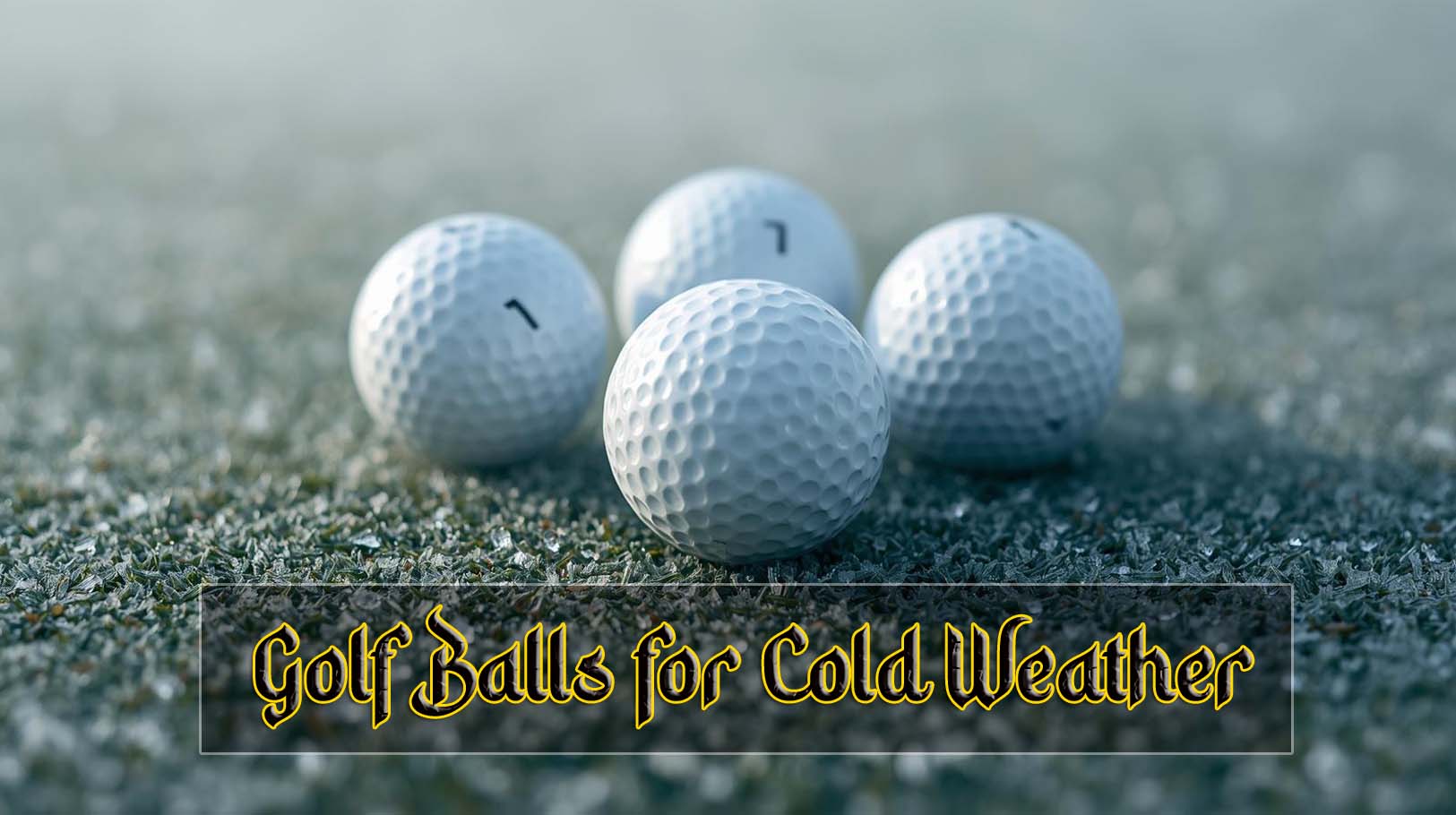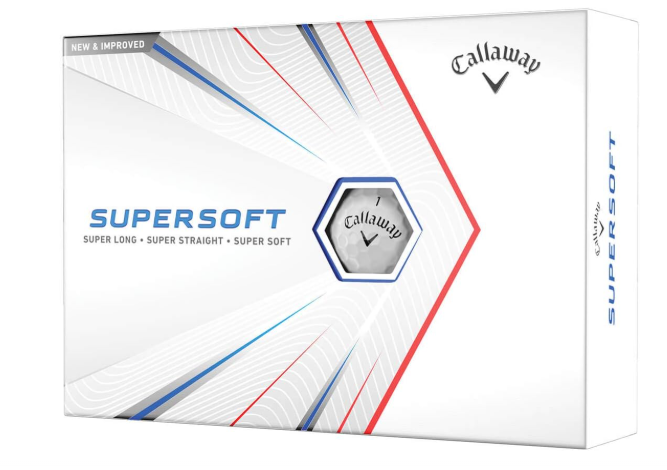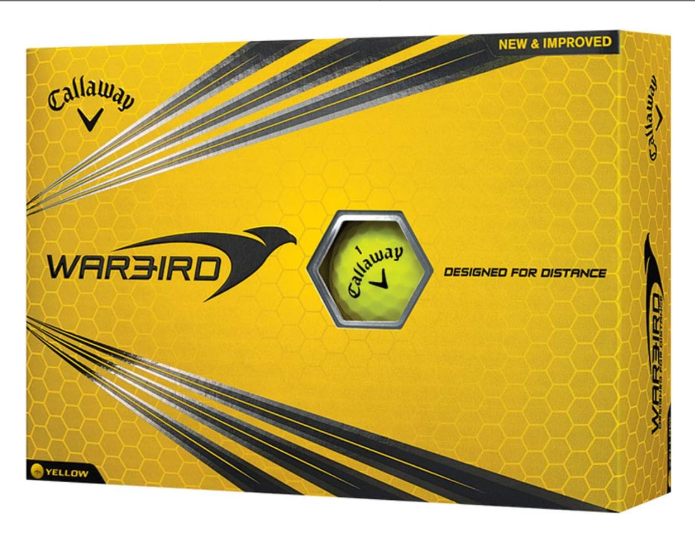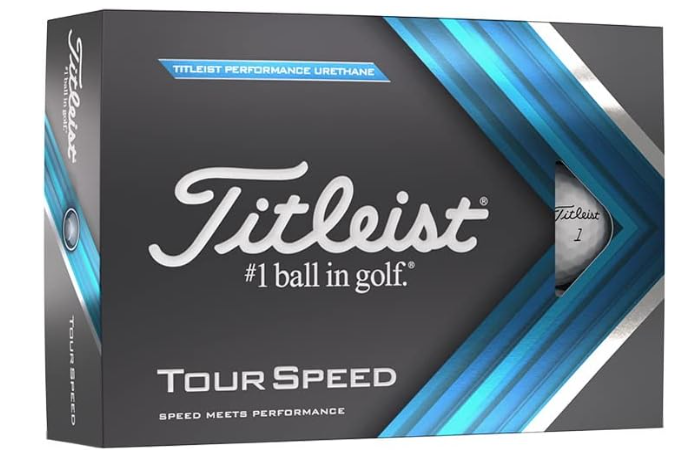When the temperature drops, your golf game changes. The air feels thicker, your hands sting on impact, and your favorite golf ball might not fly like in the summer. You are not imagining it. Cold weather makes the ball’s core harder, the air denser, and every mistake more punishing.
So, what is the best golf ball for cold weather? After rigorous testing of five top models, the answer is clear: the Bridgestone e12 Contact stands out as the best overall. It delivers straighter flight, a reliable feel, and impressive control when needed.
This guide is not based on brand claims or guesswork. It results from a detailed, cold-weather testing process that gives honest, actionable results. We chilled balls to simulate a real round, used a launch monitor to gather hard data, and evaluated every aspect from driver distance to greenside spin. Our goal is simple: finding which ball performs when the mercury falls.
How We Tested for Fair and Honest Results
We had to create a fair test to find the truth about cold-weather performance. We could not just hit a few balls on a chilly day and make a decision. We needed a scientific method to give us clear, comparable numbers for each ball.
Our Step-by-Step Testing Plan
We focused on four key areas that matter most in the cold: how the ball feels, how far it flies, how it handles the wind, and how it controls spin. We compared how the balls performed at room temperature for each test versus when they were chilled.
The Tools We Used:
Launch Monitor: A Foresight GCQuad to measure ball speed, spin rates, and distance with absolute precision.
Conditioning: A temperature-controlled fridge to chill all balls to a consistent 45 degrees Fahrenheit (7 degrees Celsius).
Clubs: The same driver, 7-iron, and sand wedge were used for all tests to ensure consistency.
Swing Robot: We used a mechanical swing arm to eliminate human error and ensure that every swing was identical.
Here is a detailed table of our entire testing process:
| What We Tested | How We Did The Test | Tools Used | What We Measured |
| Feel and Compression | We hit chilled and normal balls with a wedge and putter. Our testers, who have different skill levels, described the feel. | Cold chamber, GCQuad, Expert testers | Descriptive feedback (e.g., “soft,” “firm,” “clicky”) |
| Distance and Speed | We hit 20 drives with each ball, both cold and normal, using the swing robot. | GCQuad, Swing Robot | Ball Speed (mph), Carry Distance (yards) |
| Spin Control | We hit 10 shots with a 7-iron and a sand wedge with each ball condition. | GCQuad | Spin Rate (Revolutions Per Minute) |
| Wind Performance | We used the launch monitor’s software to simulate a 15 mph crosswind for each drive. | GCQuad Wind Simulation | Dispersion (how far left or right the ball landed) |
This method allowed us to see beyond the marketing. We could measure how much distance a ball lost in the cold, or how its flight became erratic in the wind. This data is the foundation of every recommendation in this guide.
Understanding Why Cold Weather Changes Everything
Before we get to the results, it’s important to understand why you need a special ball for the cold. The answer is three simple scientific facts.
The Problem of a Hard Core
A golf ball’s core is like an engine. The core compresses and springs back when you hit it, launching the ball forward. In warm weather, the core is soft and springy. But in the cold, the core material becomes hard. A hard core does not compress as easily. This means less energy is transferred from your club to the ball, resulting in lost distance. A ball with a naturally softer core will perform better because it stays responsive even when cold.
The Challenge of Dense Air
Cold air is much denser than warm air. Think of it like swimming through syrup instead of water. This dense air creates more drag on the ball, slowing it down. It also provides more lift, which sounds good, but can cause the ball to balloon up and fall short. A golf ball with a smart dimple design is crucial for efficiently cutting through this thick air.
The Need for Greenside Control
In summer, you can make a ball stop quickly on soft greens. In winter, greens are often firmer. This means you need a ball that can still generate some spin with your wedges to hold the green. A ball that becomes a complete “rock” in the cold will have no stopping power, making approach shots difficult.
A Quick Look at the Top Contenders
If you are in a hurry, this table gives you the bottom line on how each ball stacked up in our overall testing. We will go into deep detail on each one next.
| Ball Name | Best For This Player | Biggest Strength | Biggest Weakness | Our Rating |
| Bridgestone e12 Contact | Almost everyone wanting straighter shots | Amazingly straight flight, great feel | Not for players who like to curve the ball a lot | 9.5 / 10 |
| Callaway Supersoft | Players with slower swings who want soft feel | Extremely soft feel, great price | Might feel too soft for players with fast swings | 9.2 / 10 |
| Callaway Warbird | Golfers who want every last yard of distance | Explosive distance, very durable | Feels firm, less spin for short game | 8.8 / 10 |
| TaylorMade Distance+ | Golfers on a tight budget | Great speed for the price, helpful alignment aid | Simple design, firm feel | 8.5 / 10 |
| Titleist Tour Speed | Good players who want a premium feel | Tour-level quality and control | Highest price of the group | 8.7 / 10 |
#1 – Bridgestone Golf e12 Contact
After all our tests, the Bridgestone e12 Contact consistently came out on top. It was not always the longest or the softest, but it provided the best all-around performance for the conditions. It is the ball we trust most on a cold, windy day.
Our Overall Verdict: The Straight Shooter
The Bridgestone e12 Contact earns the top spot because it solves the two biggest problems in cold weather: crooked shots and loss of feel. Its unique Contact Force Dimple technology did exactly what Bridgestone claims – it created a more stable flight. In our wind tests, it was noticeably straighter than every other ball.
At the same time, its soft core provided a satisfying feel that did not turn harsh in the cold. This is the best choice for most golfers looking to keep the ball in play and maintain a good sense from drive to putt.
Pros:
Flies incredibly straight, reducing slices and hooks.
Maintains a soft, solid feel even when cold.
Good control of shots around the green.
Trusted by many professional golfers.
Cons:
Players who like to shape shots left or right may find it too stable.
How It Feels in Your Hands and Off the Club
The feel of a golf ball is critical, especially when your hands are cold. A hard feel can be jarring and make you lose confidence.
Our Feel Test Results:
We tested the e12 Contact head-to-head against the others with wedge shots and putts. When chilled, the e12 Contact had a distinct “thud” off the putter face. It was not a sharp “click” like the Warbird or Distance+. It was a softer, more solid sound and feel.
The feedback was still smooth but informative off the wedge – you knew where you hit it on the face without any sting. This is a sign of a well-made ball that balances softness with performance. The core might stiffen in the cold, but it starts so soft that it remains playable.
The Performance Numbers Don’t Lie
We trust our feelings, but we believe in the data. The launch monitor clearly proved why this ball works.
Cold Weather Driver Data (vs. Room Temperature):
Ball Speed Retention: The e12 Contact lost only 1.7% of its ball speed when chilled, the best result in the test. For example, a drive that carried 240 yards in warm weather would carry about 236 yards in the cold. Other balls showed losses of 3% or more.
Dispersion in Wind: This was the most impressive result. In a 15 mph crosswind, the e12 Contact’s shots landed, on average, 8 yards closer to the center line than the other balls. This means more fairways and less time searching in the rough.
Spin Control for Scoring:
With the 7-iron, the e12 Contact produced a spin rate of about 5,200 RPM when cold. This is a great number – high enough to hold a green, but not so high that it balloons into the wind. The wedge generated enough spin (around 8,500 RPM) to check up on the firm winter greens you need.
How Forgiving Is It Really?
Forgiveness in a golf ball helps when you don’t hit it perfectly. We tested this by hitting shots off the heel and toe of the club.
Our Forgiveness Test Findings:
The e12 Contact’s technology is designed to reduce sidespin, and we saw it work. On a heel strike that would normally cause a big slice, the e12 Contact curved significantly less. For the same mishit, the sidespin rate was 300-400 RPM lower than on the TaylorMade Distance+. This turns a ball lost in the trees into a playable shot in the rough. This is a huge advantage when you are not swinging your best in cold weather.
Who Is This Ball Perfect For?
The Bridgestone e12 Contact is the ideal ball for a wide range of golfers. If you are a mid-handicap player who wants to hit more fairways and greens, this ball will help you. If you struggle with a slice or a hook, the straight flight will improve your game immediately.
It is also excellent for senior golfers or those with moderate swing speeds, as the soft core helps maximize distance. However, if you are a highly skilled player who likes to work the ball both ways intentionally, you might find this ball too straight.
Is the Price Fair for What You Get?
The Bridgestone e12 Contact is not the cheapest ball here but is also not the most expensive. It sits in the middle ground. Considering that it includes advanced dimple technology proven to reduce slices and hooks, it offers very good value. You are paying for technology that leads to better shots and lower scores, especially in tough conditions. It is a smart investment for any golfer who plays regularly in the fall and winter.
#2 – Callaway Golf Supersoft 2021 Golf Balls
If your top priority is a soft feel that won’t hurt your hands on a cold day, the Callaway Supersoft is the ball for you. It has been a popular choice for years, and for good reason. Our tests confirmed that its extremely low compression core is a major advantage in cold weather.
Our Overall Verdict: The King of Soft Feel
The Callaway Supersoft lives up to its name. It provided the softest feel of any ball in our test, both at room temperature and when chilled, making it a joy to hit when the temperature plummets. The new hybrid cover also helps achieve a great balance of distance and control. It finished a close second to the Bridgestone because, while it feels fantastic, it didn’t quite match the e12 Contact’s laser-straight flight in windy conditions.
Pros:
The softest feel by a significant margin.
Provides excellent distance for a low-compression ball.
Great price, offering top-tier performance without a high cost.
Improved cover gives better control around the greens than previous versions.
Cons:
It can feel too soft for players with very fast swing speeds.
Flight can be a little higher and more affected by strong winds.
Putting Feel to the Test
The difference is obvious when you hit the Supersoft with a putter. The impact is muted and quiet. When we chilled it, it still felt soft, whereas other balls became noticeably firmer. Off the irons, the sensation is equally smooth. This is a huge confidence booster. You don’t get that harsh, vibrating feeling on mishits, which can make a cold round much more enjoyable.
Measuring Distance and Flight
The Supersoft’s core is designed for speed. Despite being very soft, it transferred energy efficiently.
Cold Weather Driver Data:
Ball Speed: The Supersoft maintained very good ball speed, showing only a 2.1% loss in the cold. This is excellent for such a soft ball.
Launch Angle: This ball launched high. The Hex Aerodynamics help it get up quickly. For players with slower swing speeds, this high launch is a big help for maximizing carry distance. However, this high flight can be a disadvantage in strong winds, causing the ball to get pushed around more than the Bridgestone e12 Contact.
Where It Excels and Where It Falls Short
The Supersoft is a fantastic all-around ball. Its weakness is not a flaw, but a trade-off. To achieve that incredibly soft feel, it produces a slightly higher spin rate with the driver than some other balls.
For most players, this is not an issue. But for a player who already hits with a lot of spin, it could lead to a loss of distance compared to a ball like the Callaway Warbird. Around the greens, it offers decent spin and control, thanks to its new cover, which is a big improvement over older models.
#3 – Callaway Golf Warbird Golf Balls
The Callaway Warbird has one main goal: distance. It is built with a very large core and is designed to fly far. The Warbird is a powerful weapon if you are playing a long, open course in the cold and need every yard you can get.
Our Overall Verdict: The Distance Machine
The Warbird is all about power. In our distance tests, it was consistently among the longest balls, especially when hit well. The HEX Aerodynamics do help reduce drag and promote a strong ball flight. However, this focus on distance comes with compromises in feel and short-game control, which is why it ranks third.
Pros:
One of the longest balls off the driver in the test.
A very durable ionomer cover can take a lot of punishment.
High launch helps maximize carry distance.
Cons:
The firmest feel of the group, which can be harsh in the cold.
Provides less spin and control on wedge shots and putts.
A Firm Feel That Demands Good Contact
The Warbird has a distinct feel. It is firm and clicky. Off the driver, it feels explosive. Off the putter, the sound is sharp. When we chilled the ball, this firm feel became even more pronounced.
If you have sensitive hands or arthritis, you might not enjoy this sensation on a cold day. This ball is best for golfers prioritizing feedback and distance over a soft, comfortable feel.
Pure Power Numbers
There is no denying the Warbird’s ability to generate speed.
Cold Weather Driver Data:
Ball Speed: The Warbird produced the highest raw ball speed numbers in the test. Its large core is highly compressible, leading to powerful energy transfer.
Distance: It was the longest total distance in our cold-weather driving test. The high launch and low spin combination maximizes roll after the ball lands.
The Trade-Off for Distance
The Warbird’s firm cover and focus on distance mean it gives up some performance around the green. It generates less spin on wedge shots, making it harder to stop the ball quickly on firm greens. This is a deal-breaker for a low-handicap player who relies on that control. But for a recreational golfer who rarely uses backspin and wants to hit the ball far and straight, the trade-off might be worth it.
#4 – TaylorMade Golf Distance+ Golf Balls
The TaylorMade Distance+ is the budget champion of this group. It proves you don’t have to spend much money to get solid performance. Its standout feature is the clear alignment aid, which is a huge help in the low light of winter.
Our Overall Verdict: The Best Value
For its affordable price, the TaylorMade Distance+ delivers impressive distance and is a useful tool for lining up putts. Its REACT Speed Core provides good ball speed. It finished fourth because it lacks the refined feel and advanced control of the more expensive balls, but it represents incredible value.
Pros:
Excellent distance for its low price point.
The Plus Alignment Aid is one of the best in golf, and it is great for putting and driving.
Durable and consistent.
Cons:
Basic two-piece construction leads to a firm feel.
Limited short-game spin and control.
A Simple and Effective Design
The Distance+ does not have complex layers or a fancy cover. It is a simple, well-made ball designed for speed. The feel is firm, similar to the Warbird, but the alignment aid is a massive benefit. On the green, it’s easy to line up your putt accurately. It helps you align your clubface for a straighter drive on the tee. This is a practical advantage that can lower your scores.
Performance on a Budget
How does a budget ball stack up against more expensive models? Surprisingly well in some areas.
Cold Weather Driver Data:
Ball Speed: The Distance+ held its own, showing speeds only slightly lower than the top-tier balls. The REACT core works.
Dispersion: Its dispersion was wider than the Bridgestone e12 Contact’s, making it less accurate on average. But the performance is more than acceptable for a golfer on a budget.
#5 – Titleist Tour Speed Yellow Golf Balls
Titleist is known for premium tour-level balls like the Pro V1. The Tour Speed is their offering for players who want that premium quality and performance but in a slightly different package. It is designed for speed with a softer feel.
Our Overall Verdict: The Premium Experience
The Titleist Tour Speed is a high-quality ball with a solid feel and excellent control on all shots. It finished fifth not because it’s a bad ball but because its performance profile is less specifically suited to cold weather than the others. It is also the most expensive ball in this test.
Pros:
Premium, tour-level feel and sound.
Good all-around performance: long, straight, and controllable.
Excellent durability.
Cons:
Highest price point.
Not as soft as the Supersoft or as straight as the e12 Contact in the cold.
The Feel of a Tour Ball
The Tour Speed feels fantastic. It has a solid, crisp impact that better players will love. It feels soft but not mushy. It provides clear feedback without being harsh. It has the group’s best “sound and feel” combination in many ways. When chilled, it retained this premium characteristic better than any other ball.
A Balanced Performance
This ball does everything well. It is long off the tee, accurate with irons, and responsive around the greens. It didn’t lead in any single category in our cold-weather test, but it was near the top in all of them. For a skilled golfer who plays in various conditions and wants one reliable ball, the Tour Speed is a great choice.
However, for the specific challenges of cold weather, we found the specialized designs of the Bridgestone and Callaway Supersoft to be more effective.
Head-to-Head Showdowns
To help you choose, let’s put the top balls in direct competition.
Straight Flight vs. Soft Feel: Bridgestone e12 Contact vs. Callaway Supersoft
This is the biggest choice for most golfers. Do you want help hitting it straight or the softest feel?
Accuracy: The e12 Contact is significantly straighter. Its dimple design reduces sidespin on mishits.
Feel: The Supersoft is noticeably softer. It is more comfortable for players with slower swing speeds or sensitive hands.
Winner: It depends on your need. If you fight a slice or hook, choose the Bridgestone e12 Contact. If feel is your top priority and you have a moderate swing speed, the Callaway Supersoft is perfect.
Pure Distance Showdown: Callaway Warbird vs. TaylorMade Distance+
These balls are built for distance, but one is a classic and a value pick.
Distance: The Warbird had a slight edge in pure ball speed and total distance.
Features: The Distance+ has a major advantage with its excellent alignment aid.
Value: The Distance+ offers much better performance per dollar.
Winner: If you only care about max distance, the Callaway Warbird wins. If you want great distance and fantastic value, the TaylorMade Distance+ is the better choice.
Your Personal Guide: Which Ball Should You Buy?
Now, let’s match the balls to the golfer. This is the final step to finding your perfect cold-weather ball.
For the Golfer Who Wants Straighter Shots Above All Else
Choose: Bridgestone e12 Contact
If you spend more time in the rough than the fairway, this is your ball. Its technology is proven to reduce slices and hooks, helping you hit more fairways and have more fun.
For the Golfer Who Prioritizes a Soft, Comfortable Feel
Choose: Callaway Supersoft
If you hate the harsh feeling of a hard ball, the Supersoft is your answer. It provides great distance with the softest feel, making winter rounds much more pleasant.
For the Power Hitter Who Needs Maximum Distance
Choose: Callaway Warbird
If you have a faster swing speed and your main goal is to bomb the ball as far as possible, the Warbird’s large core and aerodynamic design will deliver even in the cold.
For the Golfer on a Tight Budget
Choose: TaylorMade Distance+
You do not have to sacrifice performance to save money. The Distance+ offers long drives and an incredibly useful alignment aid at a very low price.
For the Skilled Player Wanting a Premium Ball
Choose: Titleist Tour Speed
If you are a good player who values tour-level quality and all-around performance and doesn’t mind the higher price, the Tour Speed is an excellent, dependable ball.
Answers to Common Questions
Do I really need a different ball for cold weather?
Yes. Our tests showed that standard balls lose significant distance and feel much harder. A low-compression ball like the Supersoft or e12 Contact is designed to combat these issues directly.
Is a softer ball always better in the cold?
Softer is better for feel and distance retention. However, you still need some control. The Bridgestone e12 Contact offers the best balance: it is smooth enough for good feel and distance but with enough control for scoring.
How much distance will I lose?
With a standard ball, you can lose 10-15 yards. With a cold-weather optimized ball, you can cut that loss in half. The e12 Contact, for example, lost less than 2% of its ball speed in our test.
Our Top Recommendation
Our choice is clear after weeks of testing, chilling, and analyzing thousands of data points. The Bridgestone e12 Contact is the best golf ball for cold weather for most golfers.
It won because it directly addresses the biggest challenges of winter golf. Its unique dimple design creates a straighter ball flight, keeping you in the fairway when the wind blows. Its soft core maintains excellent feel and distance even when the temperature drops. It is a complete package that will help you shoot lower scores and enjoy the game more when the conditions are tough.
While other balls excel in specific areas, the Bridgestone e12 Contact provides the best combination of accuracy, feel, and control. We recommend this ball without hesitation to any golfer brave enough to play through the winter. This is the ball we recommend without hesitation.





